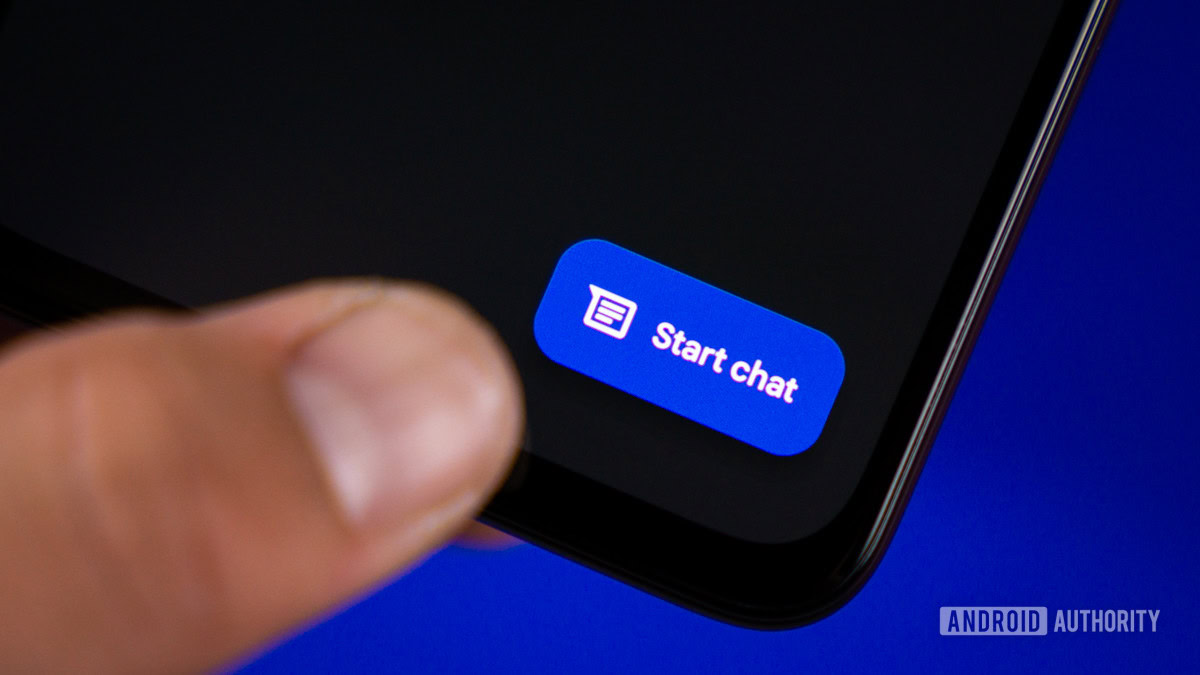
Edgar Cervantes / Android Authority
Table of contents
Have you noticed that the default SMS app on your Android device is called Messages, with two blue speech bubbles overlapping on a white background? Perhaps without realizing it, you’ve been using Google Messages. Don’t worry if you don’t remember downloading it, as it usually comes pre-installed on most Android phones. But what exactly is the Google Messages app and how to use it? If you want to learn more, keep reading.
We’re going to give you a quick run-through of what Google Messages is, how it works, and why you might find it preferable to third-party messaging apps.
What is Google Messages?
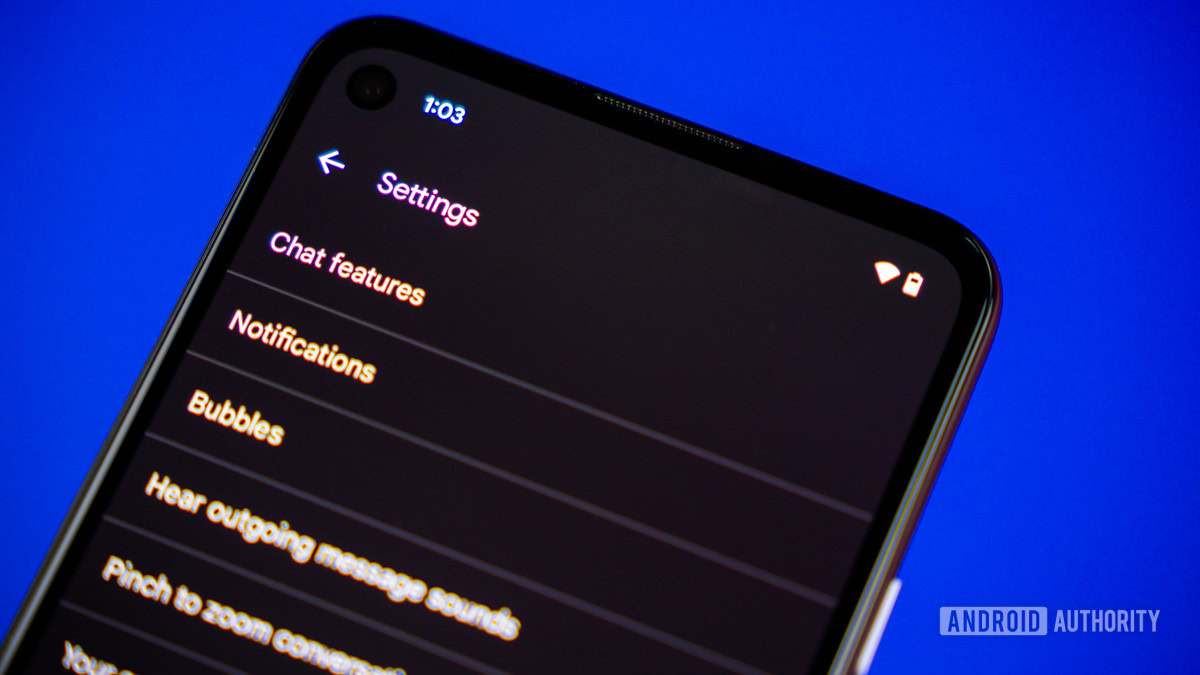
Edgar Cervantes / Android Authority
Formerly known as Android Messages, the app has been a feature of Android phones since 2014, but it has undergone significant upgrades in recent years. RCS, which stands for Rich Communication Services, was integrated into the service towards the end of the 2010s, allowing the transfer of longer messages, better-quality images and videos, and much more.
From there, Messages for Web and end-to-end encryption were introduced, and the service has been enhanced still further in recent months. Now you can use Google Messages to do most things that you might be familiar with from third-party apps like WhatsApp, such as start group chats, reply to specific messages, give emoji reactions to messages, and so on.
It also has features that other messaging services don’t offer — more on that later.
How does Google Messages work?
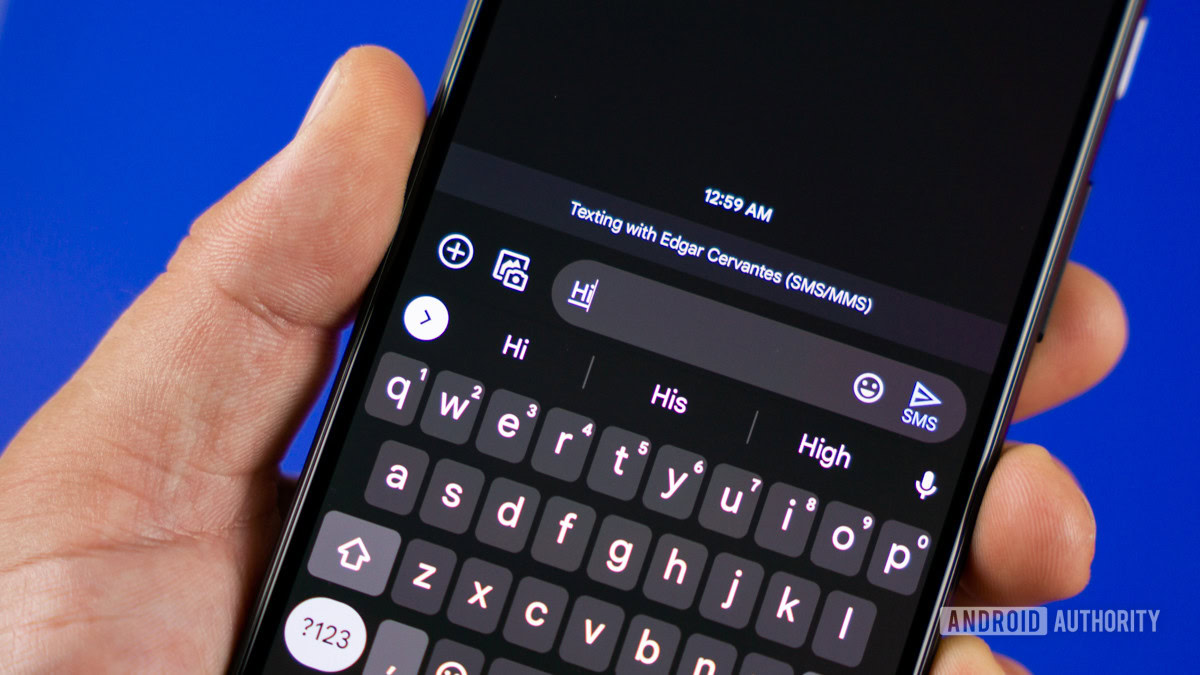
Edgar Cervantes / Android Authority
Google Messages not only comes pre-installed on most new Android phones, such as the latest Google Pixel and Samsung flagships, but it’s usually also set as the default messaging app. At its most basic level, it will display SMS and MMS messages that you receive through your network operator, but this is now the fallback option in terms of message transmission.
As long as you and the person you’re communicating with have the appropriate feature enabled, RCS messages will be exchanged via your Wi-Fi or cellular data connection. This is what allows for the encryption of messages and larger filer transfers to happen.
In the event that either party doesn’t have an internet connection or the RCS feature is disabled, Google Messages will revert to sending and receiving messages via SMS or MMS — unless you tell it not to.
What are the benefits of using Google Messages?
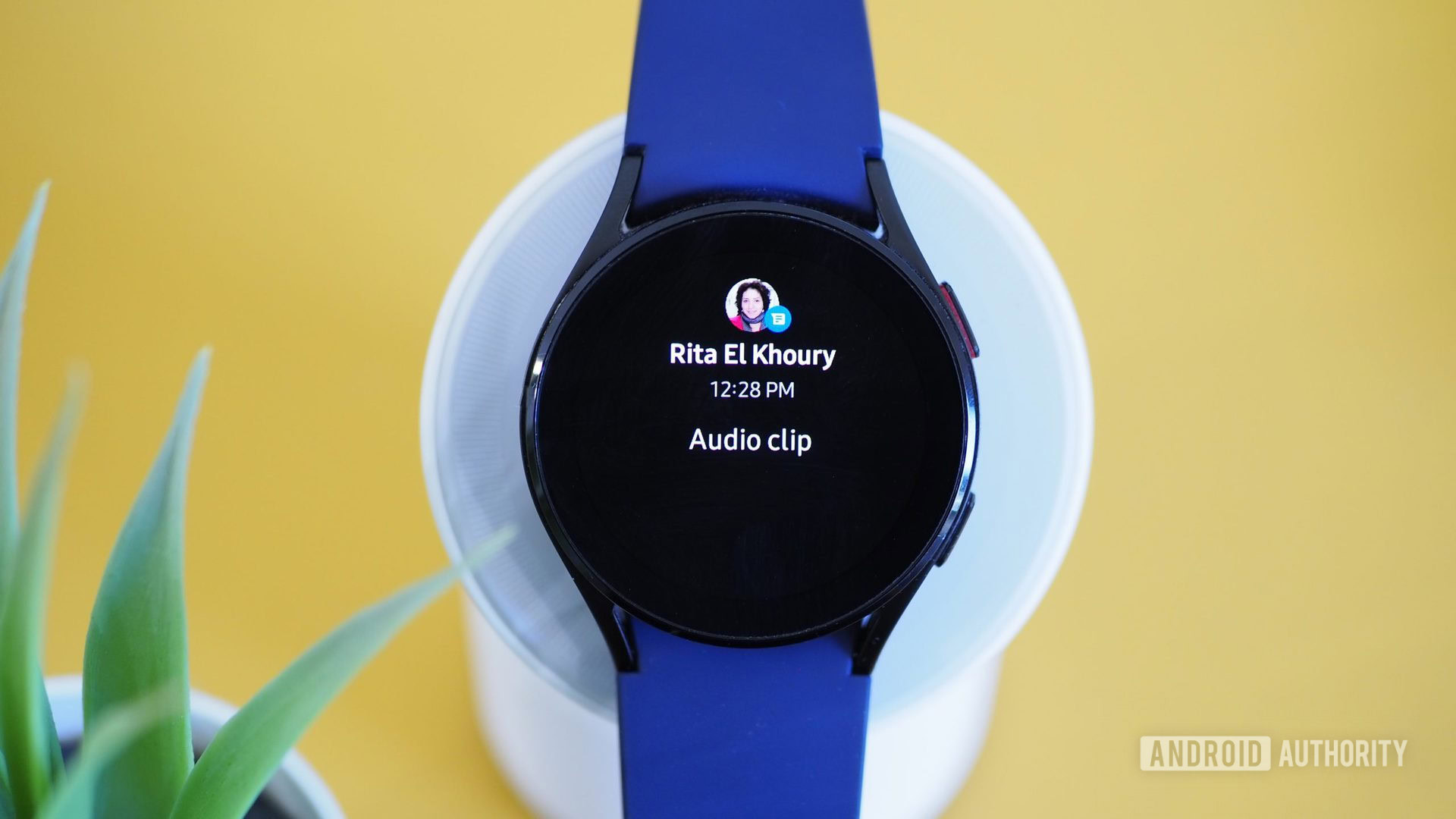
Rita El Khoury / Android Authority
The benefits of Google Messages over old-school SMS and MMS messages quickly become obvious. As mentioned above, using RCS messaging over your Wi-Fi or cellular connection allows for larger and more varied files to be sent, such as video clips, GIFs, documents, and so on. It also allows for these messages to be easily encrypted, and while it may use some of your data if you’re not on a Wi-Fi connection, it spares your SMS allowance.
Google Messages offers other benefits that we’ve come to enjoy on most messaging apps. You can see a “delivered” and “read” status on sent messages, respond to specific messages in a chain, see if someone is typing, react to messages with emojis, and much more. If you think of something you can do in apps like Telegram or WhatsApp, the chances are that you can probably do it, or something similar, in Google Messages.
Get transcriptions of voice messages so that you don’t need to play them.
But there are also features that, if not unique to Google Messages, at least aren’t as common in other messaging services. For instance, you can schedule messages if you want them to be sent at a later time, or you can get ‘nudged’ as a reminder of a birthday or a message you haven’t responded to in a while. You can also get transcriptions of voice messages so that you don’t need to play them.
Then there’s the trump card: the Google ecosystem. Tight integration with other Google apps such as Calendar, Maps, YouTube, Photos, or Assistant adds proprietary value to the service. One-tap calendar reminders are a good example, or the option to send videos as a Google Photos link, saving the data usage of transmitting the video itself.
How to use Google Messages
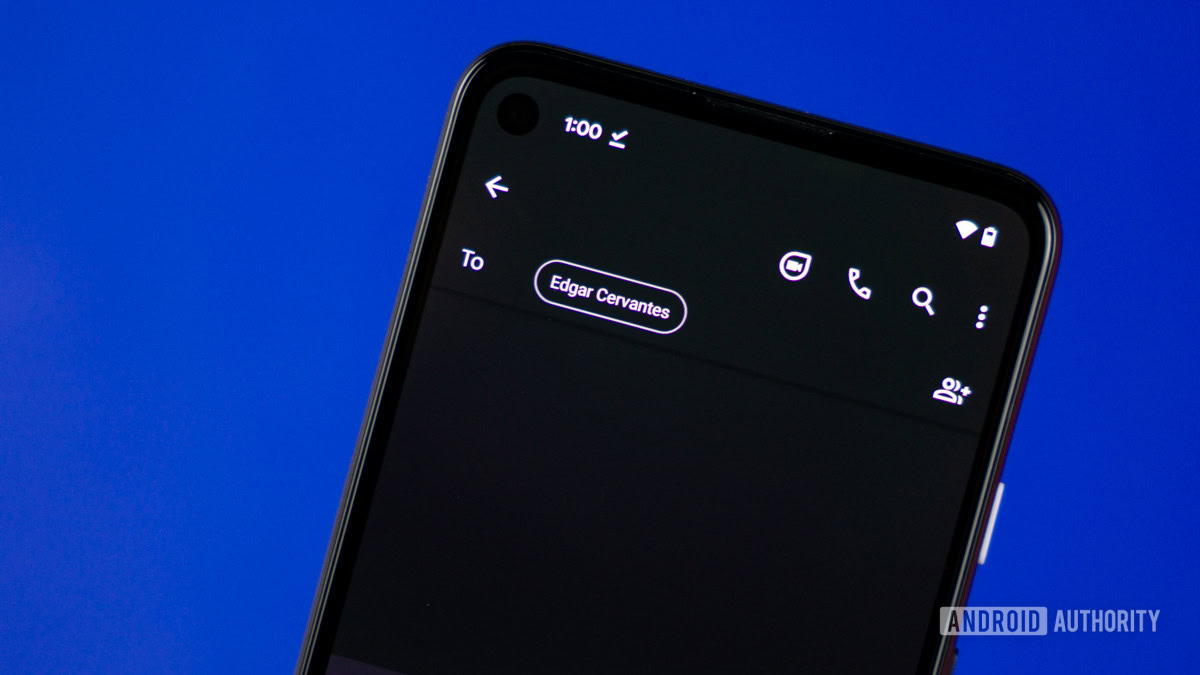
Edgar Cervantes / Android Authority
There’s a long list of features available in Google Messages, but you don’t need to be familiar with many of them to use the app effectively. To get started, it’s just a case of downloading the app from the Play Store and then setting it as your default messaging app when prompted. Even this is unlikely to be necessary as your Android device probably already has the app, and it’s probably already your default too.
To get chatting, simply open the app and press on the chat bubble in the bottom-right corner of the screen. Then you can choose a contact and start tapping out your message.
Before that though, you’ll probably want to ensure that Chat feature is enabled. It might well be enabled by default, but it’s worth checking because this is the key feature that allows for the expanded functionality you’re used to in third-party messaging apps, such as typing indicators and read receipts.
You’ll likely be prompted to enable chat features when you first open the app. If not, follow the following steps:
- Press your profile image in the top-right corner of the app.
- Tap Message settings.
- Select the Chat features option.
- Ensure that the Enable chat features toggle is switched on.
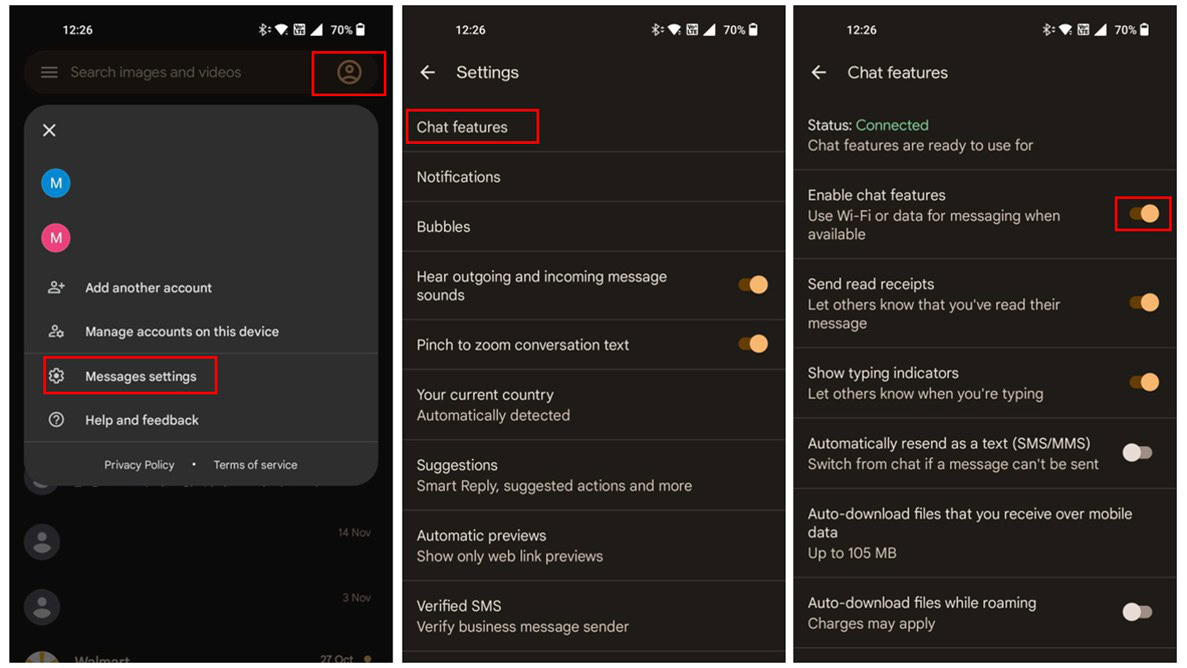
Matt Horne / Android Authority
You’ll notice while you’re on this screen that you can make other key decisions about the app’s functionality, such as whether RCS messages should be sent by SMS or MMS if they can’t be sent via a data connection. Play around with the options a bit to customize the experience to your taste.
The button below takes you to the Play Store, where you can download Google Messages for Android. There isn’t an iOS app available at the time of writing — Apple doesn’t allow third-party SMS apps.
How to use Google Messages on the web
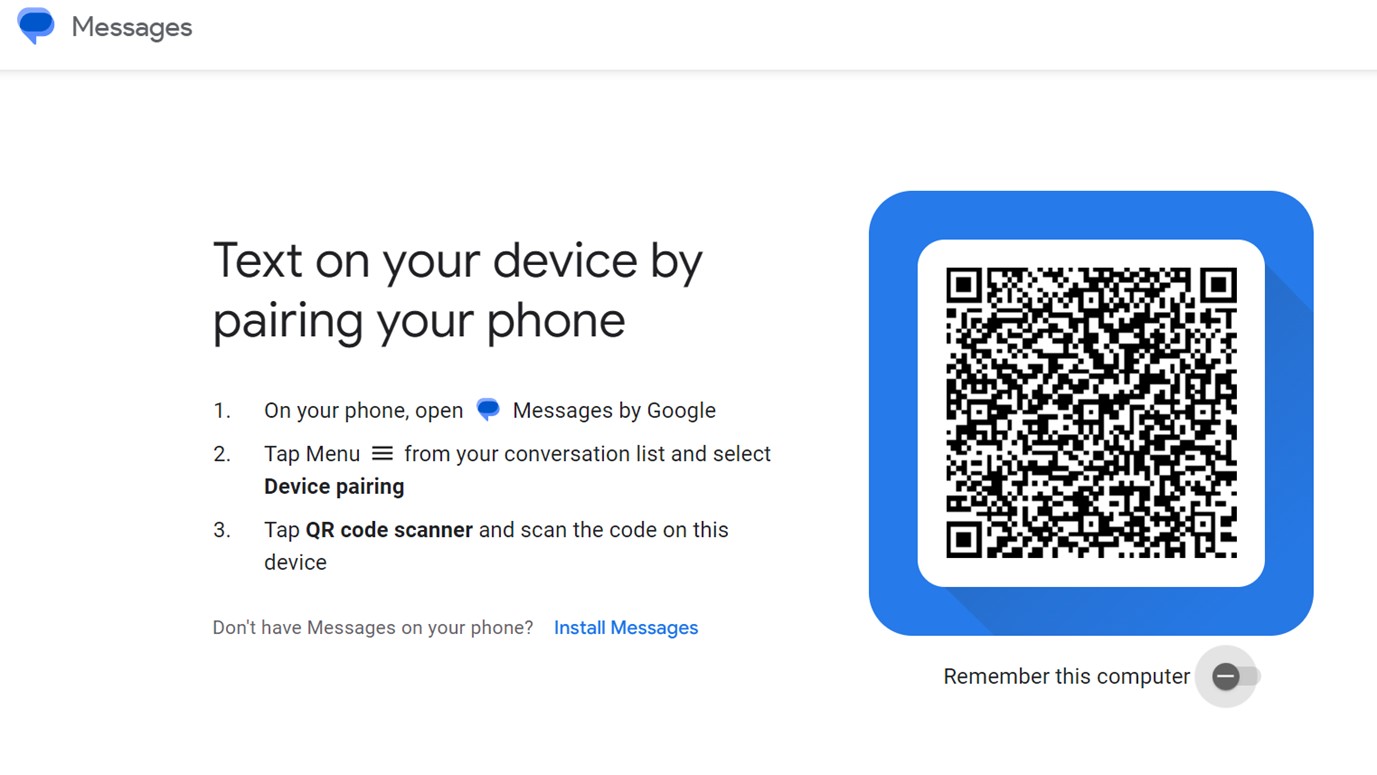
Google Messages has a web browser akin to the likes of WhatsApp Web. It’s easy to set up and makes typing out longer messages from your computer much easier. Here’s how you get started:
- On your PC or laptop, navigate to the Messages by Google website. You’ll be presented with a QR code and some instructions.
- On your device, tap the Menu button in the top-left of the screen, represented by three horizontal lines.
- Select Device pairing.
- Tap QR code scanner.
- Use the scanner on your device to scan the QR code on your computer screen.
You’re in, and you’ll see your messages on the screen, with various features from the mobile app also available. One of the first things you might be interested in adjusting is the theme, depending if you’re a Light Mode or Dark Mode type of person.
It’s worth remembering that both your phone and computer need to have an active internet connection to use the browser version of Google Messages.



